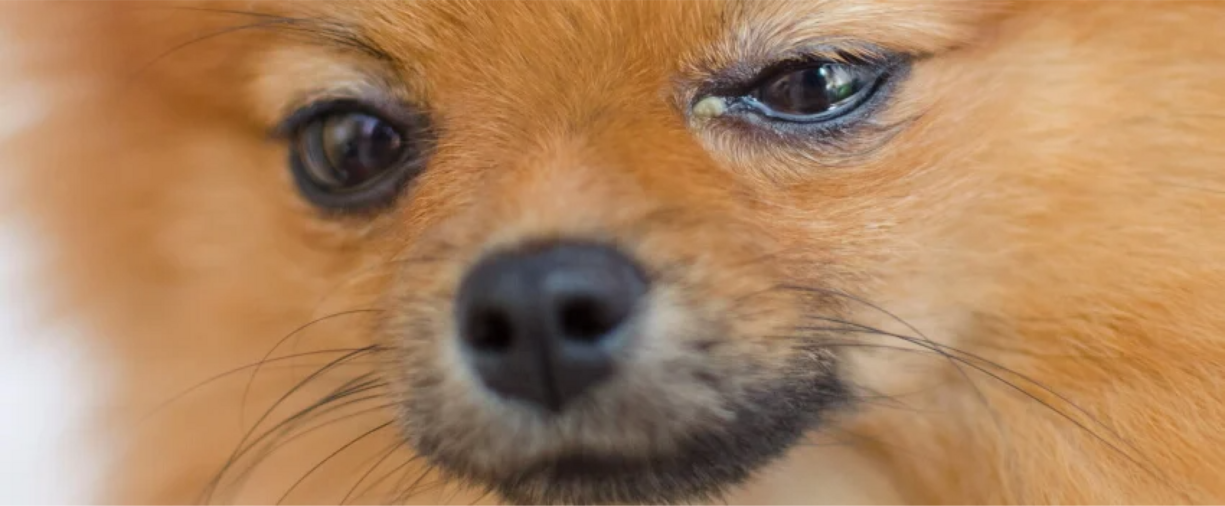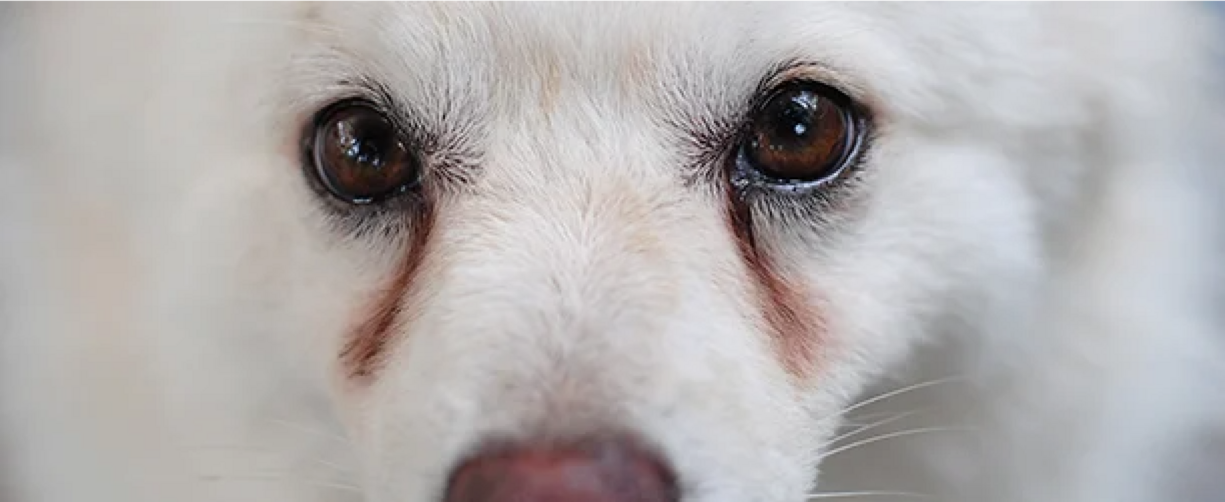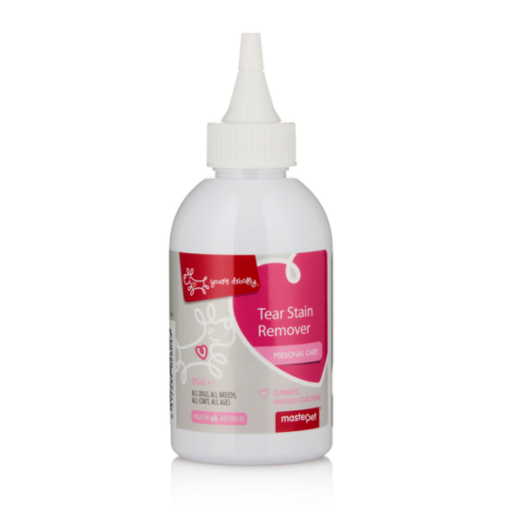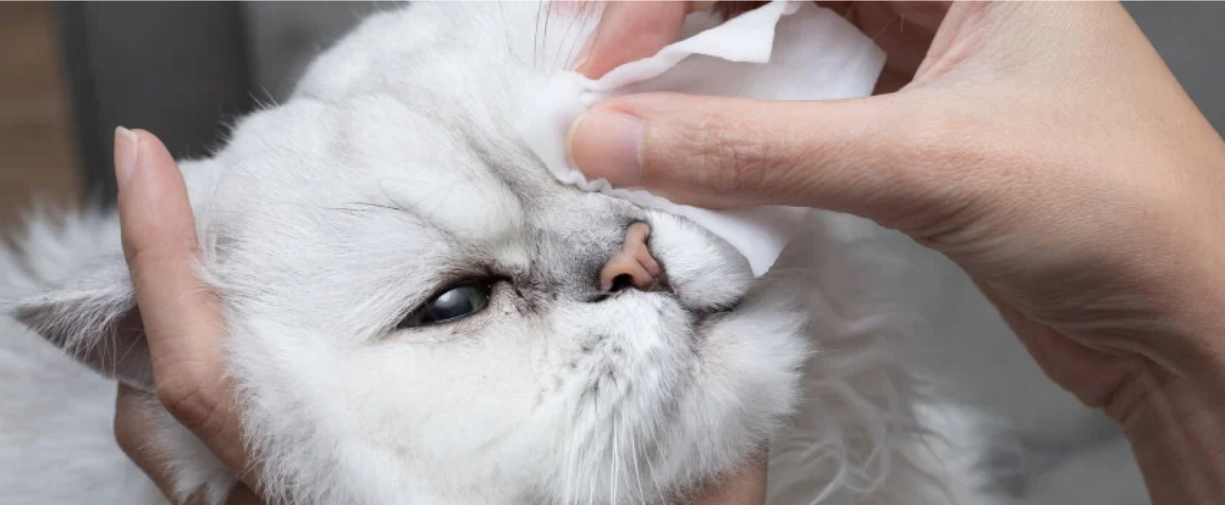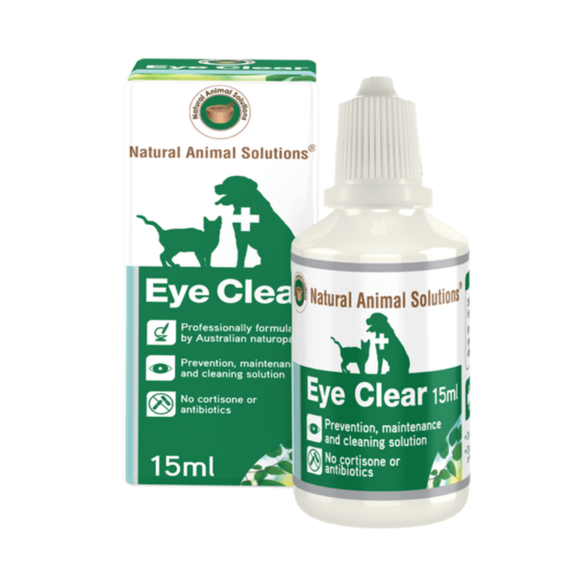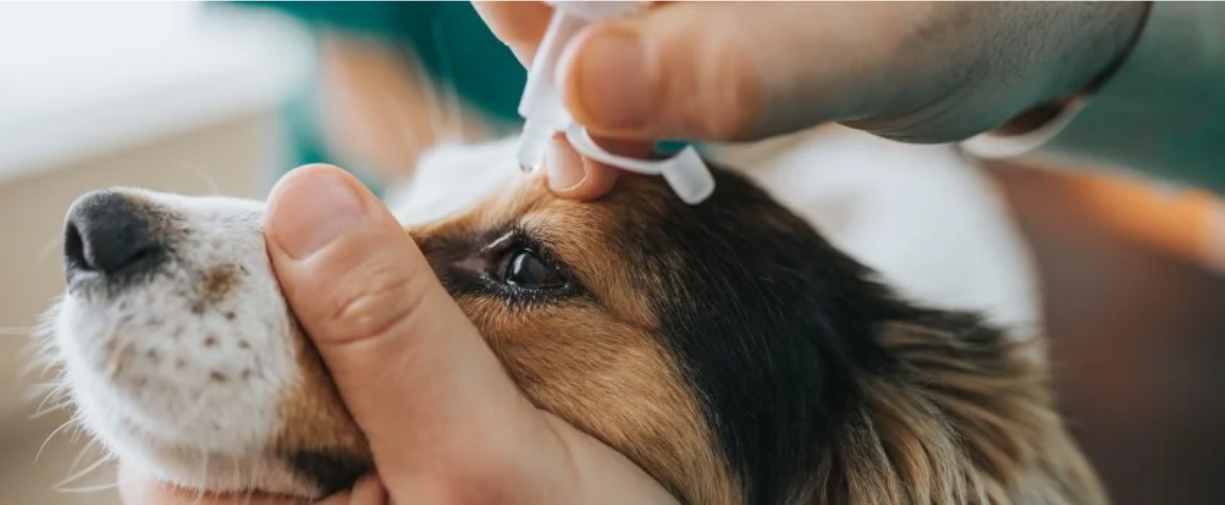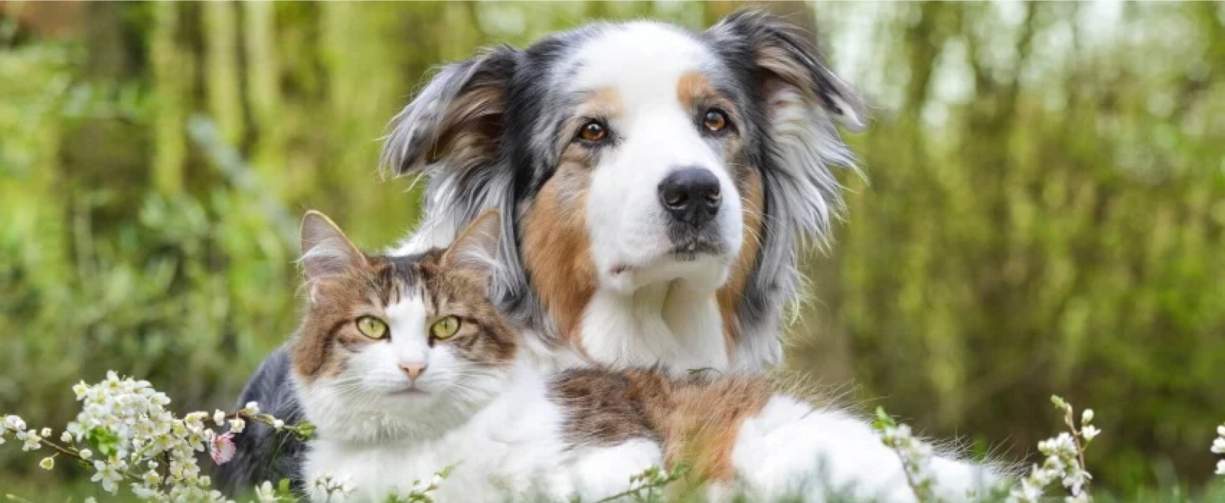Treatment usually involves pain relief, antibiotic drops or ointment, and an elizabethan collar which can be useful to prevent your dog or cat from rubbing their eye.
2. Tear Staining Syndrome
Often seen in light coated animals like Maltese dogs and Persian cats. This can occur due to impaired tear drainage from a blocked tear duct or where the tear duct itself in not formed properly. You may notice red/brown staining of the hair below the eyes, by a compound in the tears. There are some products to clean the tearing and prevent staining, and there is an option for flushing the duct under anaesthetic if it is just blocked. For more information see our article on Tear stains in cats and dogs.
3. Eyelash and Eyelid Abnormalities
Entropion is inversion of the eyelid margin, so basically the eyelid rolls in and rubs on the eyeball and this may cause irritation by the eyelashes rubbing on the eyes or lids that donât fully close over the eyes. Ectropion is the eversion of the eyelid margin so the eyelid rolls outwards.Eyelash disorders: Distichia where the eyelash grows from the eyelid margin rather than the eyelid skin and can slightly rub on the eyeball. Ectopic cilia are usually more significant as these short eyelashes rub directly on the eyeball and can cause discomfort and even corneal ulceration in young dogs.
4. Conjunctivitis
Conjunctivitis is inflammation of the conjunctiva, which is a tissue that makes up part of the eye and eyelid. Causes of conjunctivitis include:
- Anatomical factors such as eyelid and eyelash abnormalities
- Environmental causes include irritation from dust,wind, smoke, weeds and pollens and even irritating shampoos or medications near the eye
- Infectious causes also play a frequent causant role specifically bacteria as well as viruses and parasites
- Allergies may cause conjunctivitis either from local allergens in the grass, systemic allergies such as food allergies, and atopic dermatitis (hay fever).
Bacterial Conjunctivitis in dogsBacterial conjunctivitis is quite uncommon in dogs and cats. Most cases of bacterial conjunctivitis are secondary to another underlying eye disease such as; dry eye, eyelid abnormalities, and corneal ulcers that cause inflammation and subsequent bacterial infection. Treatment is usually with a topical antibiotic ointment as well as treatment of any underlying disease.
Allergic ConjunctivitisThis is seen quite commonly in the dog and often in association with atopic dermatitis (hay fever). Therefore a common finding is an itchy dog. This type of conjunctivitis is often treated with a steroid ointment.
Infectious Conjunctivitis in CatsThe most common causes are herpesvirus and chlamydia. Herpesvirus is a respiratory virus in cats. Cats who have the virus may show symptoms such as eye discharge, especially during periods of stress, such as moving house. Treatment is with viral or bacterial ointments depending on the cause of the infection. It is also important to make sure your cat is up to date with their vaccination!
5. Dry Eye
This is a disease that causes inadequate tear production and is usually a result of an immune system disorder. Tears provide lubrication to the eyes as well as removing allergens form the surface of the eyes. With dry eye, even though there is decreased tear production, the disease stimulates mucous production which is why you may notice a thick yellow/green discharge on the eyeball. Your vet can diagnose this condition by measuring the tear production in each eye. Treatment is through adding lubrication to the eyes and using medication to increase tear production, which is usually very successful.
The Best Products for Removing Tear Stains
